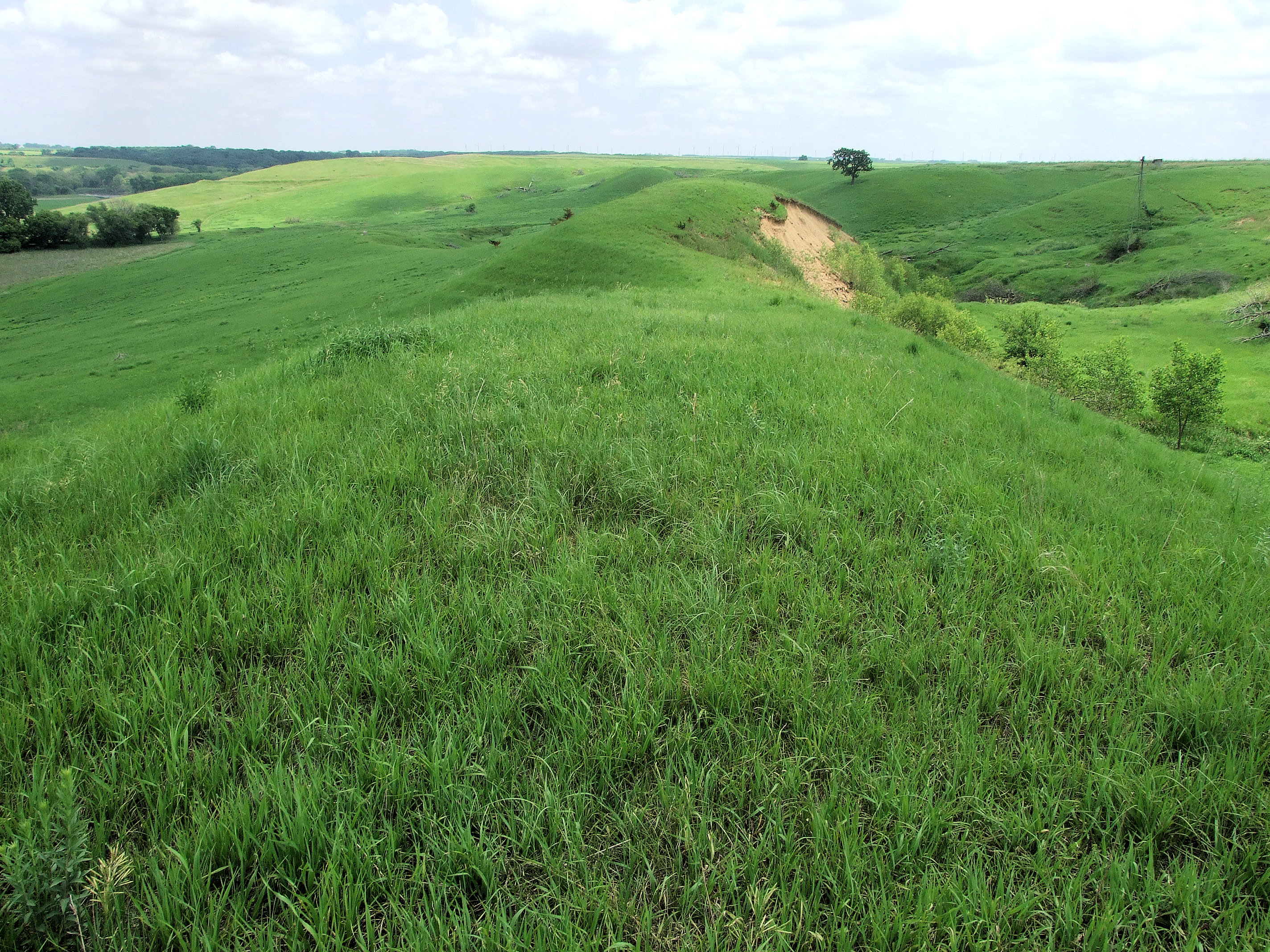
Parts, or all, of eleven northwestern Iowa counties comprise a landform referred to as the Northwest Iowa Plains. This region’s age and erosional scouring patterns have left the landscape broadly rolling, with its eastern half somewhat resembling the Iowan surface of eastern Iowa. The Northwest Iowa Plains’ western half is underlain by deposits that predate the Illinoian glacial epoch, while the eastern half is underlain by Wisconsinan glacial till deposited prior to advance of the Des Moines Lobe. Loess (wind-blown silt) deposits are nearly continuous over the entire landscape, ranging from 1 m depths in the east to more than 4 m in the west. Along the Big Sioux River, which forms the Iowa boundary of this region, hills are steep enough to sometimes be locally referred to as the “Little Loess Hills,” merging into the larger, classic Loess Hills just to the south in Plymouth County. In the region’s far northwestern corner of Lyon County may be found Sioux quartzite, exposed at the surface in Gitchie Manitou State Preserve and on surrounding private lands. This formation is among the earth’s oldest exposed bedrock, part of an ancient ocean coastal headland and subsequent collapsed mountain range.
Once completely dominated by tallgrass prairie, and some midgrass prairie along its far western edge, the Northwest Iowa Plains landscape is Iowa’s highest, generally ranging from 427 to 488 m in altitude. It is also the coldest, driest (66 cm average annual precipitation), and most treeless, similar to higher plains of the nearby Dakotas. Like the Des Moines Lobe and much of Iowa, most of this region is intensely cultivated for row crops, although steeper areas near the Big Sioux River retain considerable pastureland, remnant native prairie, and some oak-cedar stands. Such mix of cover types plus extreme northwest location result in habitats featuring some western plains flora and fauna, along with species more typical of the rest of Iowa.
Dry grasslands and hills in the western third of this landscape, including the Big Sioux River bottomlands and some wooded areas, host nesting Upland Sandpipers, Western Kingbirds, Blue Grosbeaks, Western Meadowlarks, and Loggerhead Shrikes. Rare or accidental species sometimes nesting here are Spotted Towhees, Black-billed Magpies, and Burrowing Owls. The eastern two-thirds of this landscape, more dominated by row-crop agriculture, hosts frequent nesters such as Gray Partridge, Horned Larks, and Savannah Sparrows.